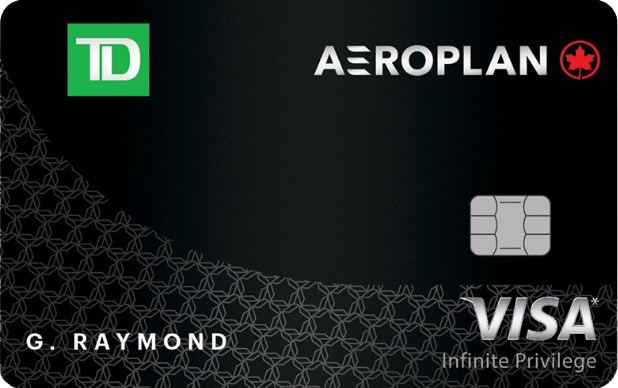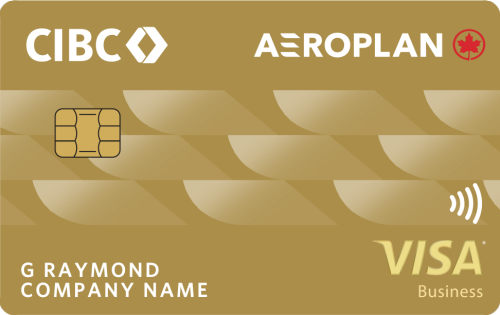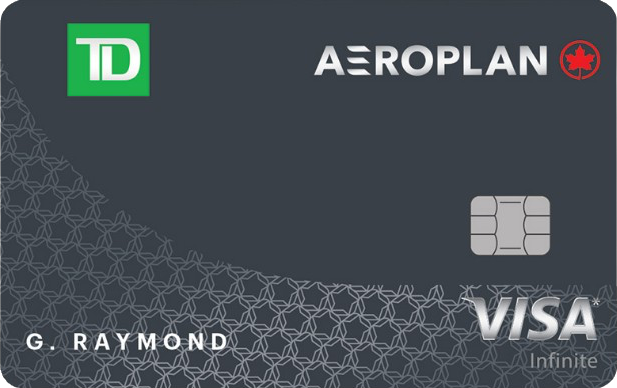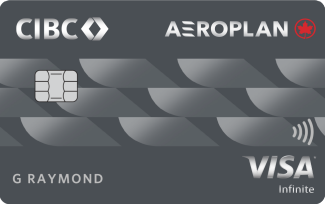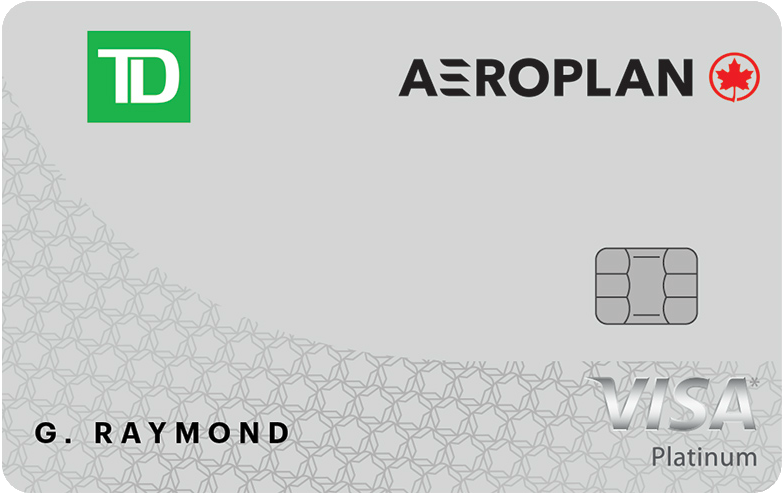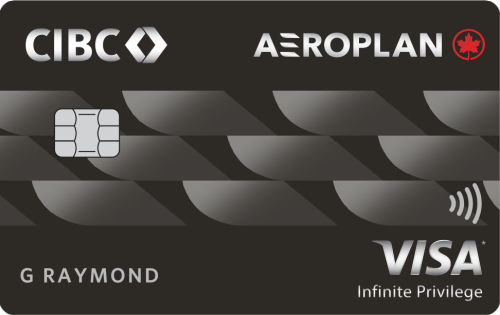Two of the most popular loyalty programs for booking transatlantic flights are Air Canada Aeroplan and Air France KLM Flying Blue.
Aeroplan has long dominated the airline loyalty space in Canada since it offers the most co-branded credit cards in the market. It’s also accessible through transferable points programs on both sides of the border, making it a popular program for Americans, too.
In the past few years, Air France KLM Flying Blue has been making its presence known to North Americans, with its competitive award pricing, co-branded credit cards, and access through transferable points programs in Canada and the United States.
In this edition of Head-to-Head, we’ll pit Aeroplan and Flying Blue against each other, weighing out the respective strengths and weaknesses, with a particular focus on transatlantic redemptions.
1. Points Valuation
Whenever we compare different loyalty programs, it’s useful to first establish an estimated value of the points.
At present, we value Aeroplan points at 2.1 cents per point (CAD) or 1.6 cents per point (USD). This value is calculated based on the relative ease of earning Aeroplan points, the vast number of partners available in the program, the generous stopover policy, and more.

Meanwhile, we currently value Flying Blue miles at 2 cents per mile (CAD) or 1.5 cents per mile (USD) – a value that has increased in the recent past.
The program’s strengths lie in its competitive transatlantic award pricing, the lucrative monthly Promo Rewards, the generous stopover policy, adding First Class partner redemptions, and easy access to unique destinations, such as Mauritius and French Polynesia.
Verdict: Based solely on our valuation, Aeroplan comes out ahead by a slight margin. However, it’s worth noting that our valuation of Flying Blue miles has been trending upwards as of late, while our value of Aeroplan points has remained steady for quite some time.
2. Ease of Earning Points
For the next point of comparison, we’ll take a look at how easy it is to earn Aeroplan points and Flying Blue miles through credit cards.
In Canada, Aeroplan has a host of co-branded credit cards available from TD, CIBC, and American Express. It also offers the US-issued Chase Aeroplan Card, which is a very competitive product.
| Credit Card | Best Offer | Value | |
|---|---|---|---|
|
Up to 95,000 Aeroplan points $599 annual fee |
Up to 95,000 Aeroplan points | $1,147 |
Apply Now |
|
85,000 Aeroplan points $599 annual fee |
85,000 Aeroplan points | $927 |
Apply Now |
|
Up to 85,000 Aeroplan points† $599 annual fee |
Up to 85,000 Aeroplan points† | $924 |
Apply Now |
|
45,000 Aeroplan points $120 annual fee |
45,000 Aeroplan points | $720 |
Apply Now |
|
Up to 60,000 Aeroplan points† First Year Free |
Up to 60,000 Aeroplan points† | $714 |
Apply Now |
|
Up to 50,000 Aeroplan points† $139 annual fee |
Up to 50,000 Aeroplan points† | $617 |
Apply Now |
|
Up to 50,000 Aeroplan points† First Year Free |
Up to 50,000 Aeroplan points† | $609 |
Apply Now |
|
Up to 20,000 Aeroplan points† $89 annual fee |
Up to 20,000 Aeroplan points† | $434 |
Apply Now |
|
70,000 Aeroplan points $599 annual fee |
70,000 Aeroplan points | $399 |
Apply Now |
|
10,000 Aeroplan points† $0 annual fee |
10,000 Aeroplan points† | $210 |
Apply Now |
In addition to co-branded cards, Aeroplan is a 1:1 transfer partner of American Express Membership Rewards, which is the most valuable and flexible credit card rewards programs in Canada.
In the US, Aeroplan is also a transfer partner of American Express US Membership Rewards, Bilt Rewards, Capital One Miles, and Chase Ultimate Rewards at a 1:1 ratio, which also happen to be the most popular credit card rewards programs in the US.
When it comes to earning Air France KLM Flying Blue miles, your ease of access depends on which side of the border you live.
In Canada, you can earn Flying Blue miles directly with the Air France KLM World Elite Mastercard – Canada’s only Air France KLM co-branded credit card.
Air France KLM World Elite Mastercard
- Get 60 XP in the first year
- Plus, earn 30 XP in subsequent years
- Earn up to 30x Flying Blue miles per dollar spent with select merchants
- Earn 5x Flying Blue miles per euro spent on Air France KLM flights
- Earn 2x Flying Blue miles per dollar spent on food and drink
- Minimum income: $80,000 personal or $150,000 household
- Annual fee: $132 (rebated in the first year)
Flying Blue is also a transfer partner of American Express Membership Rewards; however, the ratio is less favourable than Aeroplan’s, at 1 MR point = 0.75 Flying Blue miles.
In the US, Bank of America issues the Air France KLM World Elite Mastercard, with which you can earn miles through a welcome bonus and on daily spending.
Flying Blue is also a 1:1 transfer partner of American Express US Membership Rewards, Bilt Rewards, Capital One Miles, Chase Ultimate Rewards, and Citi ThankYou Rewards.
Therefore, in Canada, your options for accessing Flying Blue are more limited, while in the United States, there are more opportunities for earning miles through transfer partners.
Verdict: If you live in Canada, it’s much easier to accumulate Aeroplan points through credit cards, since there are much more available. However, in the United States, Flying Blue miles are easier to come by, since it’s a transfer partner with more programs.
When it comes to ease of earning through credit cards, the victor depends on where you live.
3. Redeeming Points
Once you’ve gathered Aeroplan points or Flying Blue miles, the next point of comparison comes in making redemptions.
Aeroplan’s redemption pricing is based on the distance flown, the origin and destination, the class of service, and the airline that you fly with.

Air Canada flights booked with Aeroplan points are subject to dynamic pricing, which means that the price fluctuates up and down, depending on demand and a number of other factors.
On the other hand, partner airlines booked with Aeroplan are subject to fixed pricing, which means that you’ll always pay the same amount of points for the flight, as long as it’s available to be booked with points.
Generally speaking, you’ll know you’re getting a good deal if your Aeroplan booking prices out at the lower end of the dynamic pricing spectrum with Air Canada, or at the fixed partner levels.
For most flights to between North America and Europe, you can expect to pay anywhere from 35,000–80,000 points in economy, 50,000–100,000 points in premium economy, 60,000–200,000 points in business class, or 90,000–225,000 points in First Class. The best deals fall at the lower end of those ranges.

With Aeroplan’s generous routing rules, you can create bespoke itineraries that really maximize the value of your points. While these types of bookings are more for serious aviation enthusiasts and less for the average user, there’s something to be said about the vast possibilities at hand with Aeroplan bookings.
Air France KLM Flying Blue also uses a form of dynamic pricing on Air France and KLM flights.
For transatlantic flights, the lowest redemption costs for flights with Air France or KLM are as follows:
- Economy: 20,000 miles
- Premium economy: 35,000 miles
- Business class: 50,000 miles

However, it’s worth noting that you can also see prices of double, triple, or even more, depending on the date, which is similar to Air Canada flights booked with Aeroplan points.
As with Aeroplan, these numbers should be used as guidelines as to whether or not you’re getting a great deal – if you can find award flights at or close to these values, you’ll be maximizing your Flying Blue miles.
Air France and KLM offer non-stop flights to Europe from many cities that don’t otherwise enjoy long-haul routes. In Canada, this includes Calgary, Edmonton, Ottawa, and Quebec City, and in the United States, both Air France and KLM have great coverage.
You can also book award flights with SkyTeam-member airlines, including Virgin Atlantic and Delta, using Flying Blue miles, though award availability is pretty scarce and pricing is higher than the baseline cost of Air France and KLM flights.
Verdict: It’s very difficult to declare a clear winner in this category, since the ease of redeeming points depends on so many factors: routes, class of service, award availability, time of year, and more.
Flying Blue has the clear edge when it comes to transatlantic economy and premium economy redemptions, which only get better if you can snag a Promo Reward deal that drops the price even lower.
As it pertains to transatlantic business class award pricing, the baseline redemption cost with Air France KLM Flying Blue is lower than with Aeroplan (50,000 Flying Blue miles versus 60,000–70,000 Aeroplan points), which can be lowered further with Promo Rewards.
However, you’d also have to factor in the 1:0.75 transfer ratio from Canadian American Express Membership Rewards, if that’s how you’re earning points, which brings the actual cost (66,667 MR points) more or less in line with what you can find through Aeroplan (60,000–70,000 points for most direct flights to Europe from North America).
Both programs utilize dynamic pricing, which can certainly be unpredictable and unfavourable; however, the fixed pricing structure and availability of award redemptions with partner airlines through Aeroplan is easier to predict and more bountiful than Flying Blue’s.
Therefore, we’ll give Aeroplan the slight edge in this measure, bearing in mind that this particular point of comparison is very dynamic.
4. Taxes and Fees
Aside from the cost in points or miles, another important aspect of a loyalty program is the costs you’ll incur in the form of taxes and fees on award bookings.
Aeroplan doesn’t pass along carrier-imposed or fuel surcharges on redemptions, and the amount of taxes and fees you pay is quite low, generally in the range of $50–200 (CAD), depending on your itinerary.
For bookings with partner airlines, Aeroplan imposes a $39 (CAD) partner booking fee. The remainder of the taxes and fees are the unavoidable government-imposed charges, such as security fees, immigration fees, tourism fees, and others, which you have to pay regardless of how you book your flights.
For the most part, you’ll pay the same amount of taxes and fees for an economy booking as you would for the same itinerary in premium economy or business class.

When it comes to Flying Blue redemptions, you’ll encounter a moderate amount of taxes and fees, which include carrier-imposed surcharges. Depending on your route and class of service, you can expect to pay $100–400 (CAD) for a one-way transatlantic reward booking.
This means that you’ll pay higher surcharges for a one-way direct flight in business class (~$375 CAD)…

Than you would in premium economy (~$150 CAD)…

Than you would in economy (~$100 CAD).

Verdict: On average, you’ll pay less out-of-pocket with an Aeroplan redemption than you would with a Flying Blue redemption. Therefore, we’ll give Aeroplan the edge when it comes to taxes and fees on redemptions, especially for bookings in premium cabins.
5. Partner Airlines
One of the most attractive features of a loyalty program is the number of partners it gives you access to.
Aside from Air Canada, Aeroplan points can be redeemed for flights with over 45 partner airlines. These include Star Alliance carriers such as Singapore Airlines, EVA Air, Lufthansa, Turkish Airlines, and United Airlines, as well as external partners such as Virgin Australia, Oman Air, Emirates, and more.

There are also some excellent redemption opportunities with Canadian regional partners, including Calm Air, Canadian North, and Air Creebec, amongst others.
It’s worth noting that Aeroplan has been experiencing some ongoing issues with award availability on some partner airlines in the recent past. While this affects transpacific flights more than transatlantic flights, the full roster of partner airlines isn’t currently available, though we’re assured that Aeroplan is working on addressing the underlying issues.
As for Flying Blue, you’ll have access to SkyTeam-member airlines, including Delta Air Lines, Virgin Atlantic, ITA Airways, and China Airlines, as well as other non-affiliated airlines, such as Etihad Airways.

Verdict: One of Aeroplan’s biggest strengths is the amount of partner airlines that you can redeem Aeroplan points with. With over 40 active partner airlines, we’ll once again have to side with Aeroplan.
However, it’s worth noting that Flying Blue has also been busy adding new partners in the recent past, and has also made First Class redemptions available with some.
Hopefully, both programs will continue to add more partners, giving members more flexibility for redemptions.
6. Program Sweet Spots
If you’d like to get the most out of your redemptions, then it’s important to familiarize yourself with a program’s sweet spots and the features that make it unique.
One of the most attractive features available with Air France KLM Flying Blue is Promo Rewards, which is a monthly offering that slashes 25–50% off regular redemption costs on a variety of routes.
Some examples of recent Promo Rewards deals we’ve seen include the following:
- Ottawa to Europe in Air France economy for 15,000 miles + ~$144 (CAD) in taxes and fees
- Montreal to Europe in Air France premium economy for 26,250 miles + ~$230 (CAD) in taxes and fees
- Calgary to Europe in KLM business business for 37,500 miles + ~$350 (CAD) in taxes and fees

Even with the taxes and fees taken into consideration, it’s difficult to find a cheaper way to get to Europe in any class of service.
Plus, Flying Blue treats all of Europe, Turkey, and North Africa as the same zone, which means that the baseline award pricing of 20,000 miles (economy), 35,000 miles (premium economy), and 50,000 miles (business class) applies to all combinations of flights between North America and those destinations.
While Aeroplan occasionally discounts redemptions to specific destinations, the savings aren’t as significant or consistent as Flying Blue’s Promo Rewards.
When it comes to Aeroplan’s transatlantic sweet spots, direct flights to Europe that total less than 4,000 miles are available for just 60,000 points in business class, which is a great price. However, business class flights in the second distance band give you up to 6,000 miles to fly for 70,000 points, which is also a great deal.
Plus, if you have Aeroplan Elite Status, you can earn lucrative Priority Rewards, which knock 50% off the cost of a redemption in various classes of service, depending on your status.
While this requires you to earn status with Air Canada, and earning Priority Rewards is directly tied to the amount of money you spend on Air Canada flights, the opportunities are excellent.
For example, you can get round-trip flights from North America to Europe for the following prices with Priority Rewards:
- Economy: 35,000+ points
- Premium economy: 50,000+ points
- Business class: 60,000+ points
Verdict: Since Flying Blue Promo Rewards are available to everyone, whereas Air Canada Priority Rewards are reserved for those with Aeroplan Elite Status, we’ll give the advantage to Flying Blue here.
Without a doubt, Promo Rewards offer outstanding value, and they’re worth paying attention to each month.
Plus, Flying Blue’s treatment of Europe, Turkey, and North Africa as part of the same zone allows travellers from all over North America to fly for the same baseline amount of points.
However, it’s worth pointing out that Aeroplan’s transatlantic award pricing is very competitive with other programs, and particularly so with Priority Rewards.
7. Other Features
Both Aeroplan and Flying Blue have a number of features from which members can benefit.
With Aeroplan, you can book a stopover of up to 45 days at an additional cost of just 5,000 points. This is a great way to include multiple cities on a single ticket at a very reasonable price.
Meanwhile, on Flying Blue bookings, you can add a stopover of up to a year on a booking at no extra cost. This is a very generous policy, although it’s worth noting that stopovers must be booked over the phone, and pricing has anecdotally reported to be inconsistent.

Both programs allow members to pool points with family members, through Aeroplan Family Sharing and Flying Blue Family. These features allow members to pool points from up to eight accounts into one, which can be helpful for a variety of reasons.
It’s worth noting that Aeroplan has temporarily disabled the creation of new Family Sharing accounts since August 2023. Existing Family Sharing accounts can continue to use the feature, but it remains unclear when it will become available for new accounts again.
Families who engage with Flying Blue can also benefit from a 25% discount on reward bookings for children aged 2–11 when travelling with an adult on an Air France or KLM flight. That’s a nice way to make family travel more affordable, and it’d be great to see something similar added to other programs, too.
Verdict: While this doesn’t cover the entirety of the various benefits available in both programs, we’ll give the edge to Flying Blue here, with its generous free stopovers, family pooling, and award discount for travelling families.
8. User Experience
Let’s briefly touch upon the user experience when engaging with Aeroplan and Flying Blue.
When it comes to searching for flights, Flying Blue has a “hidden” calendar search function, which lets you see a month’s worth of lowest award pricing at once. This makes finding dates that have the best award prices very easy.
To activate the calendar, simply leave the travel dates blank during your search…

And a calendar will appear in the search results, making it very easy to spot the lowest prices available for the month.

With Aeroplan, you can see up to a week’s worth of the lowest award pricing across all classes of service in the search results (if you’re logged in); however, you’ll have to manually search day-by-day and use filters to find the best flights.

Alternatively, you can use the United MileagePlus website to find Star Alliance-partner award availability with a calendar feature, and then revert back to Aeroplan’s website to book at better prices.
While it’s not without its limitations, the sheer number of flight combinations available in Aeroplan search results is remarkable, especially in comparison to Flying Blue. This also speaks to the number of partner airlines available through Aeroplan.
With Flying Blue, changes and stopovers must be booked over the phone, whereas many changes to Aeroplan bookings and itineraries with stopovers can easily be booked on the Aeroplan website.

Aeroplan has been adding a number of self-serve features in the past few years, reducing the need to phone the Aeroplan Contact Centre, which sometimes has long wait times, especially for members without Aeroplan Elite Status. While some bookings still must be completed over the phone, it’s great to be able to do some yourself.
With both programs, you can easily search for and book simple award flights using the Air Canada, Air France, and KLM apps.
Verdict: This is another tricky category to judge, as both programs have strengths and weaknesses.
Finding the best prices for award flights is easier with Flying Blue using the calendar search; however, you have to know about it to be able to use it.
Searching for the best prices for flights with Aeroplan requires a bit of legwork, as well as the use of filters and/or other websites, and it’d be great to see a calendar search function added.
With the ability to make bookings with stopovers and changes online, we’ll side with Aeroplan when it comes to user experience, acknowledging that both programs have areas that they can improve in.
Conclusion
Aeroplan and Air France KLM Flying Blue are both excellent loyalty programs, especially when it comes to booking transatlantic flights.
Aeroplan’s strengths lie in the ease of acquisition of points, its abundance of airline partners, the ability to build complex itineraries, its stopover feature, and its self-serve options, amongst others.
Where there’s room for growth includes the variability in dynamic pricing for Air Canada flights, as well as the ease of searching for the best deals on the Aeroplan website.
Meanwhile, Flying Blue is also relatively easy to access (especially in the US), offers outstanding baseline award pricing, features lucrative monthly Promo Rewards, has great options for families, and maintains a recent track record of continuously adding value to the program while others strip it away.
The tradeoffs include higher taxes and fees (in premium cabins), fewer partner airlines, the variability of dynamic pricing, and the need to use the contact centre for many features.
When it comes to transatlantic flights, it’s a pretty close call as to which program offers better value. Flying Blue offers lower baseline prices in miles but higher taxes and fees, whereas Aeroplan features slightly higher baseline prices in points, but lower costs in taxes and fees, as well as access to more partner airlines.
When considered as a whole, Aeroplan offers members more worldwide options to fly using points, and is a more powerful program for aviation enthusiasts and casual users alike.
However, as Flying Blue continues to add partners and assert itself as a leading loyalty program, it’s certainly worth paying attention to and engaging with, especially if you can leverage all of its features.




